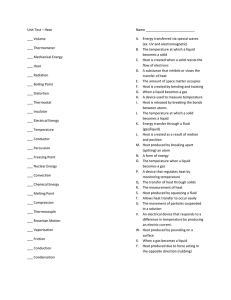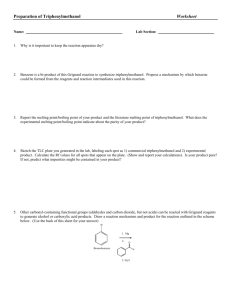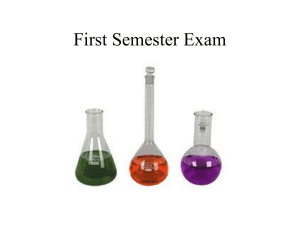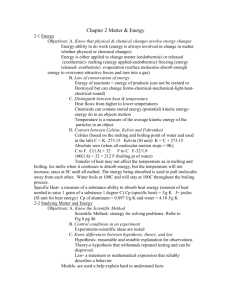Year7 States of matter weekly planning
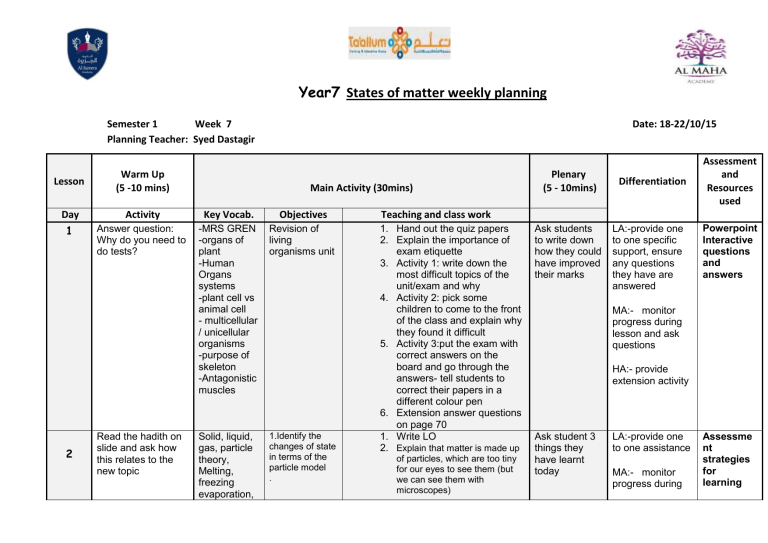
Year7
States of matter weekly planning
Semester 1 Week 7 Date: 18-22/10/15
Planning Teacher: Syed Dastagir
Lesson
Day
Warm Up
(5 -10 mins)
Activity
1 Answer question:
Why do you need to
2 do tests?
Read the hadith on slide and ask how this relates to the new topic
Key Vocab.
-MRS GREN
-organs of plant
-Human
Organs systems
-plant cell vs animal cell
- multicellular
/ unicellular organisms
-purpose of skeleton
-Antagonistic muscles
Solid, liquid, gas, particle theory,
Melting, freezing evaporation,
Main Activity (30mins)
Objectives
Revision of living organisms unit
1.Identify the changes of state in terms of the particle model
.
Teaching and class work
1. Hand out the quiz papers
2. Explain the importance of exam etiquette
3. Activity 1: write down the most difficult topics of the unit/exam and why
4. Activity 2: pick some children to come to the front of the class and explain why they found it difficult
5. Activity 3:put the exam with correct answers on the board and go through the answers- tell students to correct their papers in a different colour pen
6. Extension answer questions on page 70
1. Write LO
2. Explain that matter is made up of particles, which are too tiny for our eyes to see them (but we can see them with microscopes)
Plenary
(5 - 10mins)
Ask students to write down how they could have improved their marks
Ask student 3 things they have learnt today
Differentiation
LA:-provide one to one specific support, ensure any questions they have are answered
MA:- monitor progress during lesson and ask questions
HA:- provide extension activity
LA:-provide one to one assistance
MA:- monitor progress during
Assessment and
Resources used
Powerpoint
Interactive questions and answers
Assessme nt strategies for learning
condensation
, boiling.
3
Show a melting snowman and sun- describe what is happening
Solid, liquid, gas, particle theory,
Melting, freezing evaporation, condensation
, boiling.
1.Show in outline how the particle theory of matter can be used to explain the properties of solids, liquids and gases, including changes of state .
2.
Outline plans to carry out investigations, considering the variables to control, change or observe (as whole class).
3. Take notes from power point regarding changes of state
4. Activity 1:Watch video about matter and changes of state
5. Activity 2: in groups Draw a posters of the changes of state of water
6. Activity 3: page 44 and 45 of workbook
7. Extension activity page 46-
47 work book
1. Write lo
2. Explain that there are three
‘states of matter’ – three main ways that the particles can be put together: solid, liquid or gas: solids hold (keep) their shape liquids form a pool, not a pile, and take the shape of any container that they are put into gases escape if they are not sealed in a container
3. using balls/balloon/paper
– help students to show what happens to the particles during the changing of the states
4. Activity 1: ask group of students to use print outs (words- melting
, boiling freezing, solid , water , gas etc) to arrange themselves correctly to show melting, boiling and freezing and ask
5. Activity 2: Solids experiment-
Practicals Students are divided into three groups, each practical will last 5 minutes. The group will carry out each practical according to the instruction sheet. Students will record relevant results in the table provided and move on to the
Ask questions regarding the properties of the states of matter lesson and ask questions
HA:- provide extension activity power point
LA:-provide one to one assistance, use at least one LA paired with HA to do demonstration and experiment, give work sheet explaining the different states to
LA
Practical tasks for kineasthetic and visual learners.
Powerpoi nt
Instructio n sheet for each practical
Results table preprinted for each student
Practical equipmen t
HA and MA will be able to understand the particle theory
LA may need assistance with understanding the particle theory and thus some will require a scaffold
4
5
Recap definition of key words
Ice cube melting.
Ask students explain how did the water freeze using particle theory
Solid , liquid , gases, particle theory
Condensatio n, evaporation and freezing, melting, boiling
Analyse and evaluate heating or cooling curves.
Students can plot graphs, draw conclusions about the melting and boiling points of substances.
Students can decide if any of the results do not fit a pattern.
Investigate processes which can speed up evaporation but note that it does not take place at constant temperature.
They can account for the residue and link with salt extraction.
next practical after 15 minutes bring the class back together and discuss the results. Draw a table of solid, liquid and gas with gaps missing on the powerpoint attached.
6. Activity 3: BBC bitesize interaction activity
Extension: worksheet http://www.bbc.co.uk/education/ guides/z2wmxnb/activity
1. Explain heating and cooling can be shown on a graph
2. Show examples off graphs
3. Activity 1:Ask students to identify the melting and boiling points on the graph
4. Activity2: answer question on page 48 and 49 of work book
5. Activity 3:answer page 50
6. Extension : Describe using particle theory and key words what happens to the particles at boiling point and melting point
H\W to read page 70 and page 75- answer questions 1-4
Have a kettle boiling and ask students to explai n what’s happening using the particle theory.
Students to answer questions on page
51 from work book
Spelling quiz on key words
Define condensation and evaporation worksheet gap filling exercise.
LA:-provide one to one assistance
MA:- monitor progress during lesson and ask questions
HA:- provide extension activity
Assessme nt strategies for learning
HA and MA should be able to use keywords and write a description of whats happening.
Assessme nt strategies for learning
LA provide them with a sentence bank or delete the incorrect word worksheet.
Instead of spelling test


